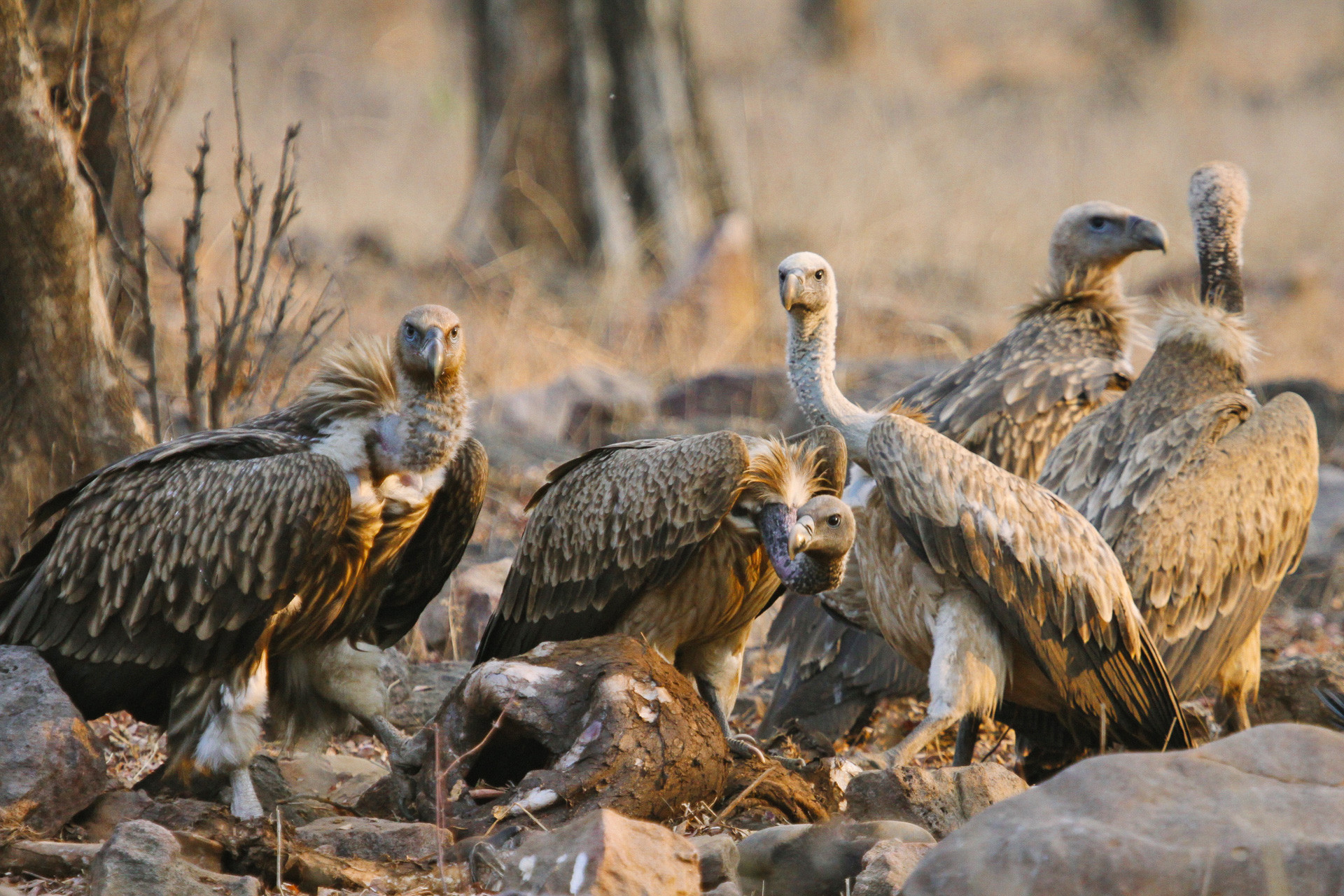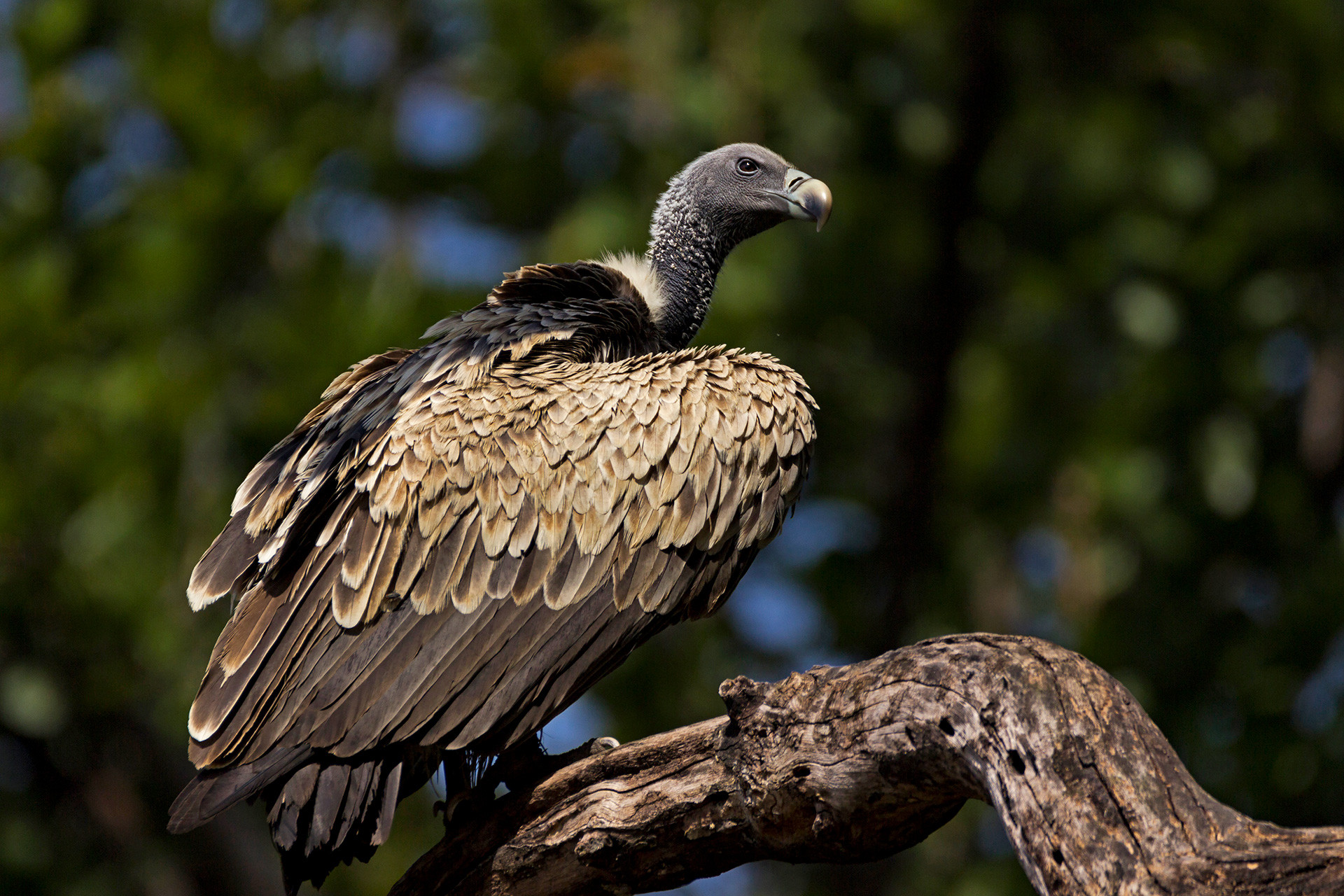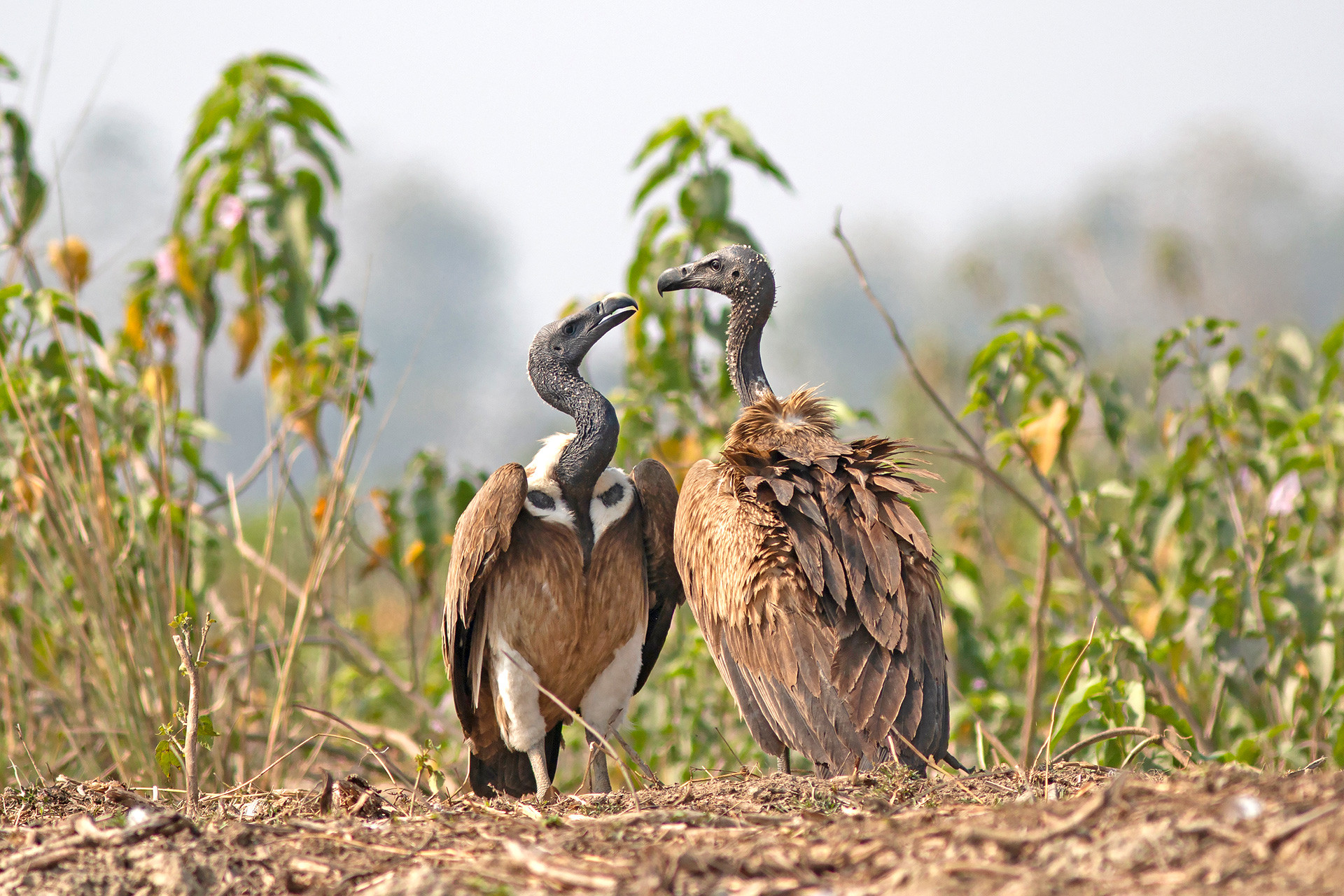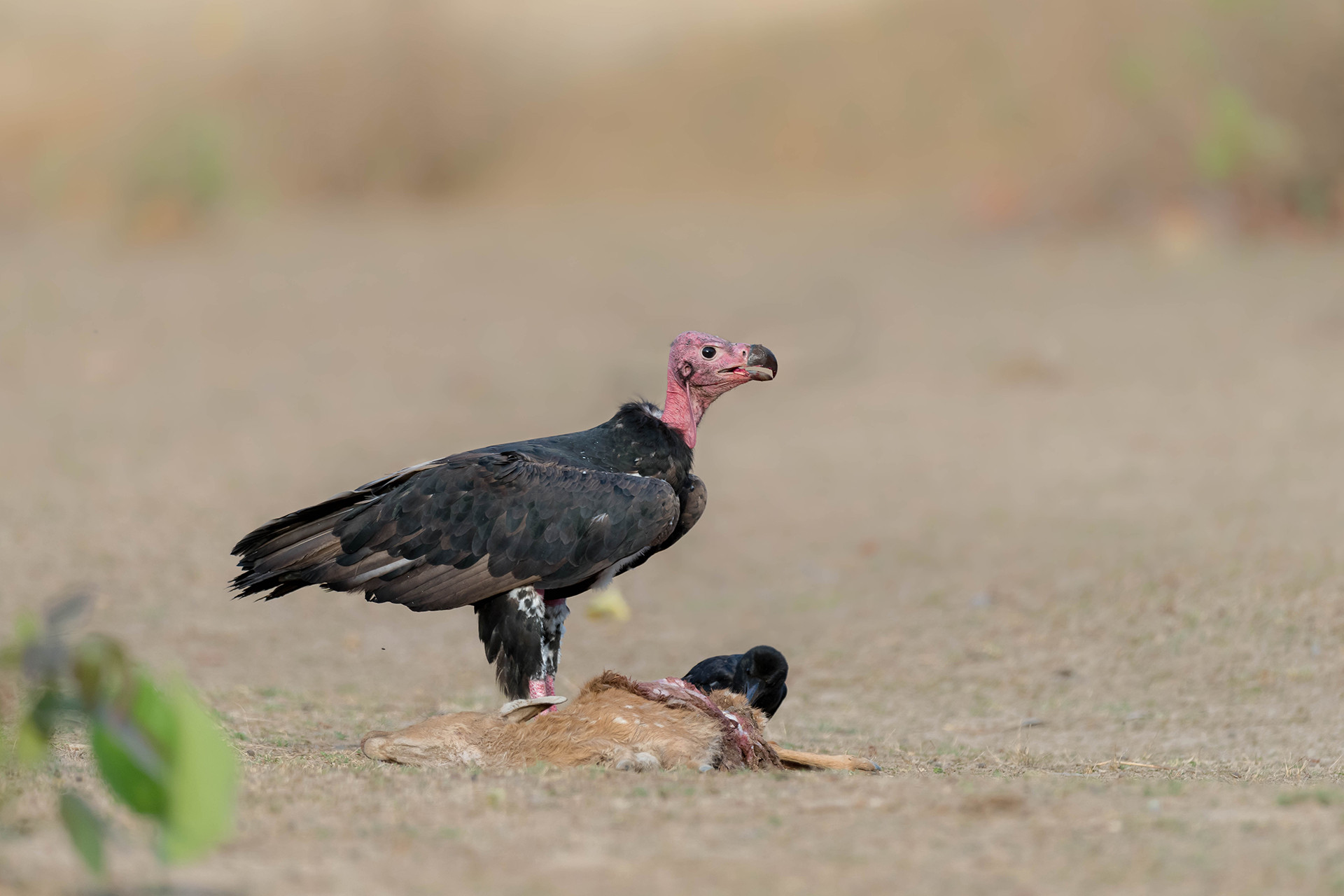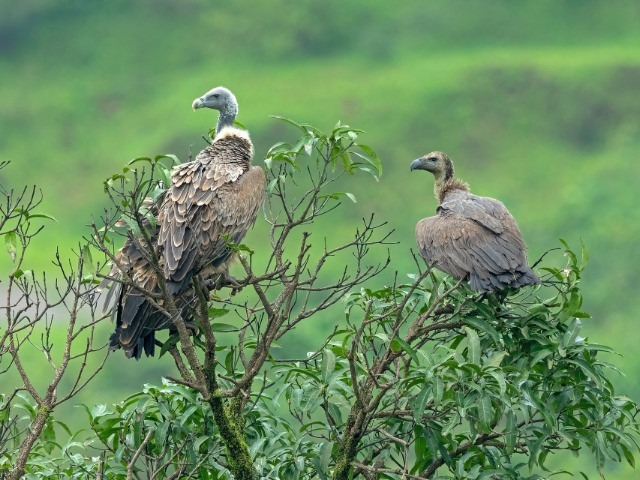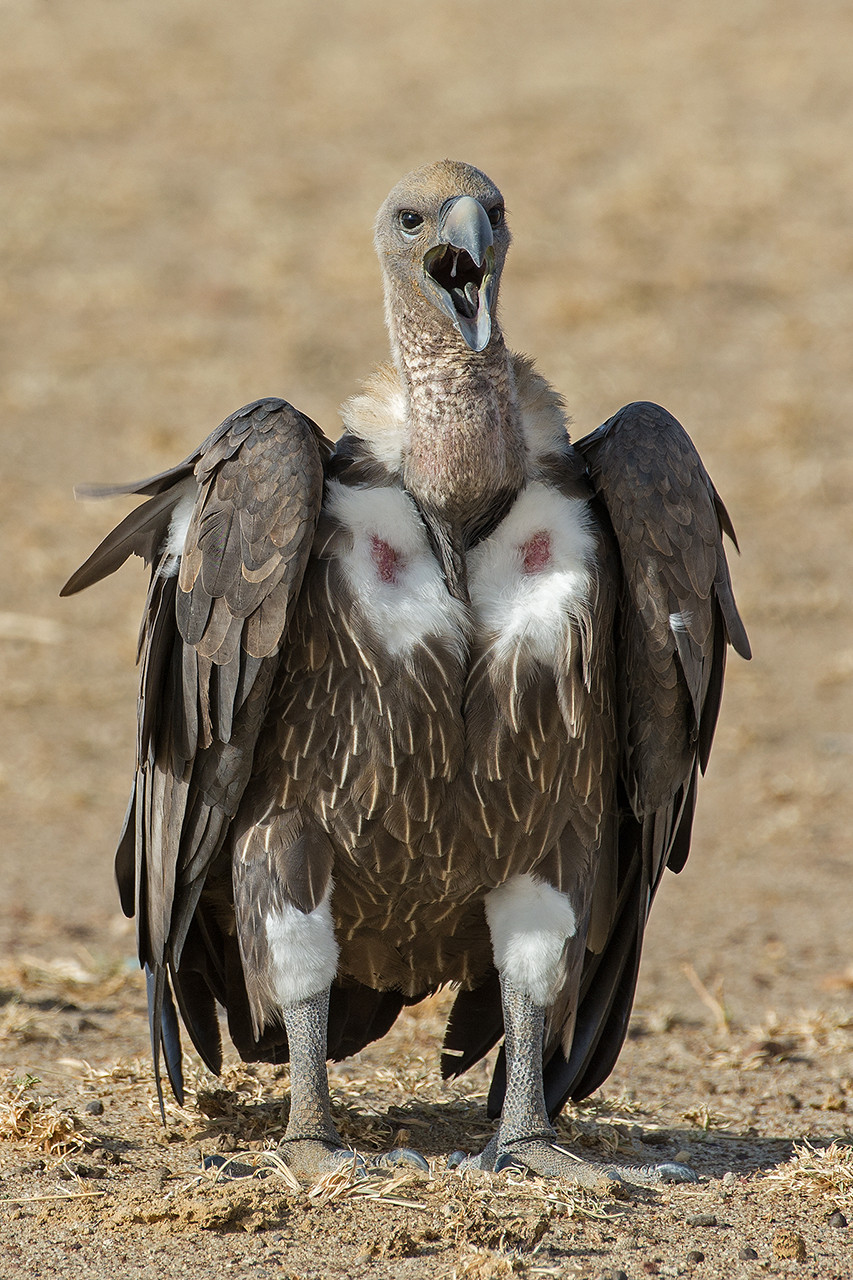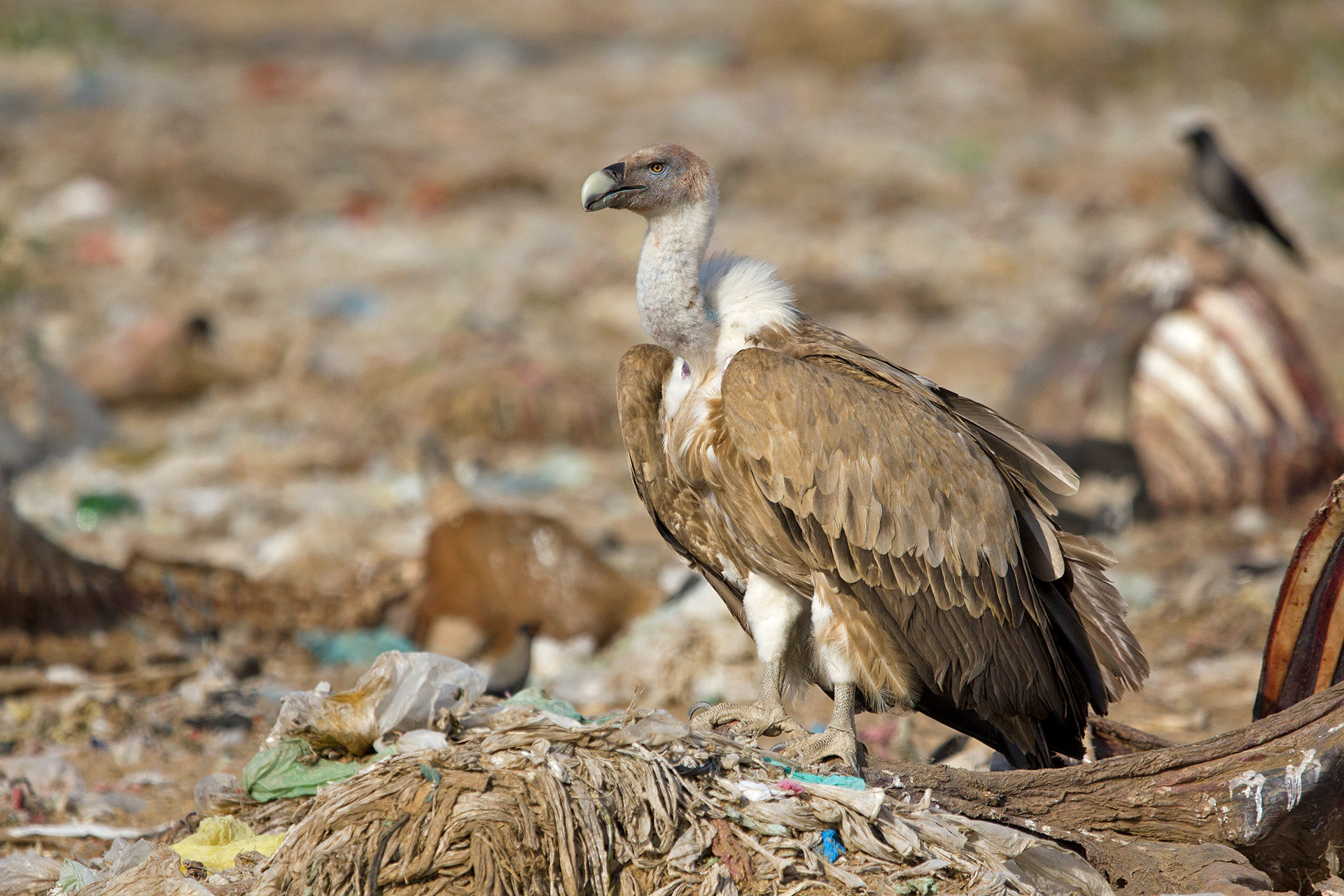There have been very few more dramatic, fast and wide scale species declines of any birds or other taxa than those of South Asian Gyps vulture populations since the 1990s.
—Chris Bowden, Globally Threatened Species Officer, Royal Society For The Protection Of Birds (RSPB), UK (in The Current Threats And Status of Asian Vultures, 2018)
It is quite an alarming statement, but it is the sad truth about the vultures of India. Even today, four of the nine vulture species in India fall under the 'Critically Endangered' category in the IUCN Red List of Threatened Species.
Of these nine vulture species, five belong to the genus Gyps while the other four are monotypic. It is estimated that India was home to about four crore vultures in the 1980s. By 2007, their populations plummeted to less than a lakh. A significant reason for this catastrophic decline is the drug diclofenac, a nonsteroidal anti-inflammatory veterinary drug. The drug is toxic to vultures, and they are exposed to it when they feed on animal carcasses that are treated with diclofenac. The relationship between diclofenac and decrease in vulture populations emerged in the mid-nineties, and since then, significant steps have been taken to prevent the usage of this drug. Vultures also face other primary and secondary threats like collision with power lines and electrocution, injury by kite strings during the festival season, and poison baits (usually intended for other wildlife).
The good news is that several conservation efforts are now in place to protect and improve the vulture populations in the country. In 2001, Bombay Natural History Society (BNHS) and the Haryana Forest Department established the Vulture Conservation Breeding Centre (VCBC) in Pinjore, Haryana. The centre is working actively to prevent the extinction of Indian, White-rumped and Slender-billed Vultures. Jorbeer Conservation Reserve in Bikaner, Rajasthan, is a dedicated vulture sanctuary where animal carcasses are dumped so the raptors can feed on them. Across species, vultures visit this 'vulture restaurant', thereby gaining access to safe food. BNHS has also worked on protecting Gyps vultures by creating Vulture Safe Zones (VSZ) and increasing awareness about the dangers of using diclofenac. In fact, the Griffon Vulture (Gyps fulvus) is now designated as 'Least Concern' by the IUCN. India's Action Plan for Vulture Conservation 2020-2025 has also laid down various measures, including enhancement of conservation breeding programmes, monitoring populations and setting up of rescue centres.
It does sound like things are on the mend, but as revealed by the conservation status of many species, the journey is a long and arduous one. Beyond safety measures, there needs to be awareness about the role vultures play in the ecosystem. The Jatayu may be venerated in Indian mythology, but the fact that vultures feed on carcasses and are often seen circling near them has earned them a bad rap. Questions like ‘What do vultures eat?’ and ‘Where do vultures live’ are still widely asked on Google, showing an underlying concern about the raptors. Acceptance and awareness can go a long way in contributing to the success of various conservation programmes.
In this article, we bring you basic information about the nine vulture species that reside in the Indian subcontinent. We hope that this will encourage you to engage in conversations around vulture protection and support some of the ongoing efforts.
Indian Vulture (Gyps indicus)
Alias: Long-billed Vulture
IUCN Red List Status: Critically Endangered (Population decreasing)
Closely related to the European Griffon, the Indian Vulture is mainly found in forests, grasslands and shrublands. Like many other vulture species, it is also observed near human-occupied spaces like cities, towns and agricultural areas. As the name suggests, this vulture is found throughout the Indian subcontinent and neighbouring countries. A medium-sized raptor, the Indian Vulture has white feathers and a dark torso. As seen in the image, the white patch on its neck is more prominent on the back. Indian Vultures nest in trees when there are no cliffs around their habitats. They mainly feed on carrion and are found near slaughterhouses along with other vulture species, looking for carcasses.
Slender-billed Vulture (Gyps tenuirostris)
Alias: Himalayan Long-billed Vulture
IUCN Red List Status: Critically Endangered (Population decreasing)
Slender-billed Vultures prefer grasslands and forests as habitats. They are mostly seen in the northern parts of India, where they reside in the sub-Himalayan regions and the Gangetic plains. They are characterised by their long, slender necks, pale underparts and their dark, thin bills. Unlike other vultures, they are not that common in areas close to human habitation. They feed on carrion, and large flocks are often seen near carcasses. These vultures make limited movements, mainly in search of food. Slender-billed Vultures nest in tall trees.
Egyptian Vulture (Neophron percnopterus)
Alias: White Scavenger Vulture, Pharaoh's Chicken
IUCN Red List Status: Endangered (Population decreasing)
Considerably smaller than other vulture species, Egyptian Vultures were once widespread in cities. They are now found in select regions, mainly in open areas, near river banks and around large garbage dump sites. Their preferred habitats are rocky areas and inland cliffs. They are identified by their yellow heads and their white and black plumage. While they mainly feed on carrion, they are also known to feed on discarded fruits, small birds and eggs. As seen in the image, they use their thin beaks to grab small pieces of meat. Egyptian Vultures mainly build nests within caves and occasionally on trees and buildings.
Red-headed Vulture (Sarcogyps calvus)
Alias: Asian King Vulture, Indian Black Vulture, Pondicherry Vulture
IUCN Red List Status: Critically Endangered (Population decreasing)
Although distributed throughout India, Red-headed Vultures are present in low numbers in most regions except for the western Himalayas. These vultures prefer open areas, semi-deserts and scrublands away from human settlements. They are medium-sized raptors with distinct bare, red heads, red legs and neck, and dark plumage. Red-headed Vultures are known to feed on the carcasses of ungulates, birds and even fish. Unlike many vultures, they are not seen in large flocks and are usually found singly or in pairs. They build nests in tall trees.
You may also like to read
White-rumped Vulture (Gyps bengalensis)
Alias: Indian White-backed Vulture, White-backed Vulture
IUCN Red List Status: Critically Endangered (Population decreasing)
Medium-sized vultures, White-rumped Vultures are commonly seen near human-occupied spaces. As seen in the image, they have white neck ruffs and black and brown plumage. They also have a white patch of feathers close to their feet on their lower backs. They are often seen in flocks with other vulture species. As with most vultures, White-rumped Vultures feed on carrion. But they have also been observed to feed on garbage and waste from slaughterhouses as they stay close to human settlements. They build nests on trees and cliffs.
Griffon Vulture (Gyps fulvus)
Alias: Eurasian Griffon
IUCN Red List Status: Least Concern (Population increasing)
Seen mainly in the northern and northwestern parts of India, Griffon Vultures prefer rocky areas and grasslands as habitats. They have light brown plumage, a white neck and dark brown/black tail feathers. They build nests sheltered between rocks or in caves. They are frequently seen with other vultures when feeding on carrion. They primarily feed on carcasses of large mammals, and prefer the softer parts of the meat. Their long necks aid them in feeding when they share the carrion with other scavengers.
Himalayan Vulture (Gyps himalayensis)
Alias: Himalayan Griffon
IUCN Red List Status: Near Threatened (Population stable)
Himalayan Griffons are found in the Himalayan mountain range in India. These raptors prefer rocky areas and mountain peaks, where they mostly reside in altitudes between 1200 and 5500 meters. These large vultures have pale plumage compared to the Griffon Vulture and distinct stout bills. They are also identified by their white heads. Himalyan Griffons are not commonly seen near human settlements. They mainly feed on the carcasses of large mammals and monitor other scavenging birds to locate sources of food. They reside in small colonies and often dominate feeding areas and prevent other vultures from sharing the carcass. Himalayan Griffons build nests within caves and are known to return to the same nesting site.
Cinereous Vulture (Aegypius monachus)
Alias: Black Vulture, Monk Vulture, Eurasian Black Vulture
IUCN Red List Status: Near Threatened (Population decreasing)
One of the heaviest raptors in the world, Cinereous Vultures are identified by their bare heads, their dark plumage and their large beaks. Notice the upright neck feathers in the image? This is why they are also called Monk Vultures, as these feathers resemble the hood of a monk's cloak. Found mainly in the northern parts of the country, Cinereous Vultures prefer grasslands and forests as habitats. They build nests on trees as well as cliffs. Cinereous Vultures feed on the carrion of medium and large-sized mammals, but they are also known to hunt for live prey and feed on snakes occasionally.
Bearded Vulture (Gypaetus barbatus)
Alias: Lammergeier, Ossifrage
IUCN Red List Status: Near Threatened (Population decreasing)
Bearded Vultures reside in rocky regions and mountains where they are usually found above a 1000 meter altitude. In India, they are mostly seen around the Himalayan region. They are identified by the red rings around their eyes, their long tail feathers and the rust-like colouration on their face and body. Although it is believed that Bearded Vultures capture live prey, they do so occasionally. They mainly feed on carrion, and bones consist a significant part of their diets, earning them the name ‘bone-eater’. They sometimes break the bones against hard rock surfaces, making it easier for consumption. They also capture birds. Bearded Vultures build nests within caves or on ledges of cliffs.
The team wishes to thank Shreeram MV for his inputs.
